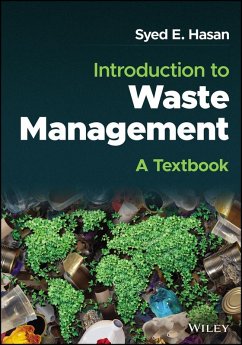Winner of the 2023 E.B. Burwell, Jr. Award for outstanding contributions in engineering and environmental geology Introduction to Waste Management An introductory textbook offering comprehensive coverage of the management of municipal, hazardous, medical, electronic, and nuclear waste Written by an experienced instructor in the field of solid waste management, this modern text systematically covers the five key types of solid wastes: municipal, hazardous/industrial, medical/biological, electronic, and nuclear, discussing their sources, handling, and disposal along with the relevant laws that govern their management. With its emphasis on industry standards and environmental regulations, it bridges the gap between theoretical models and real-life challenges in waste disposal and minimization. Instructors and students in environmental science, geology, and geography may use Introduction to Waste Management: A Textbook to better understand the five main types of solid waste and their management both from a local and a global perspective.
Dieser Download kann aus rechtlichen Gründen nur mit Rechnungsadresse in A, B, BG, CY, CZ, D, DK, EW, E, FIN, F, GR, HR, H, IRL, I, LT, L, LR, M, NL, PL, P, R, S, SLO, SK ausgeliefert werden.


